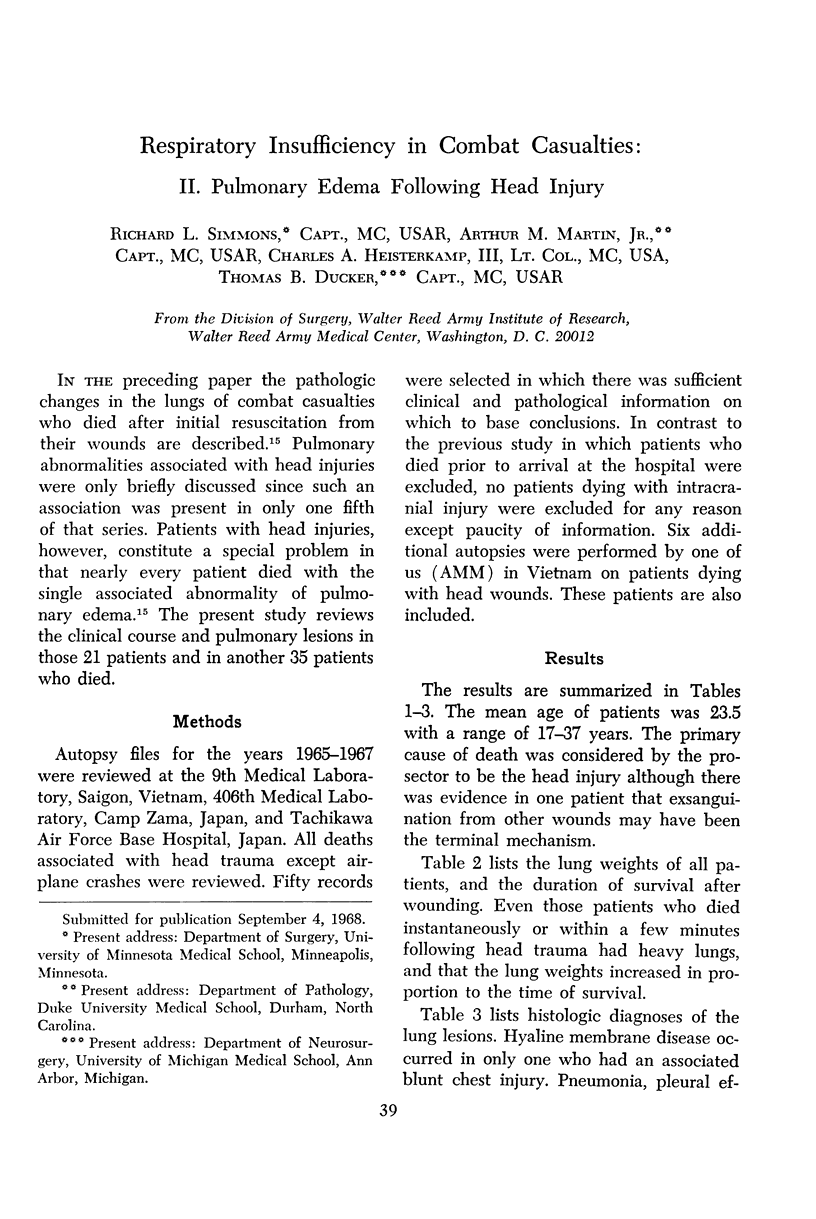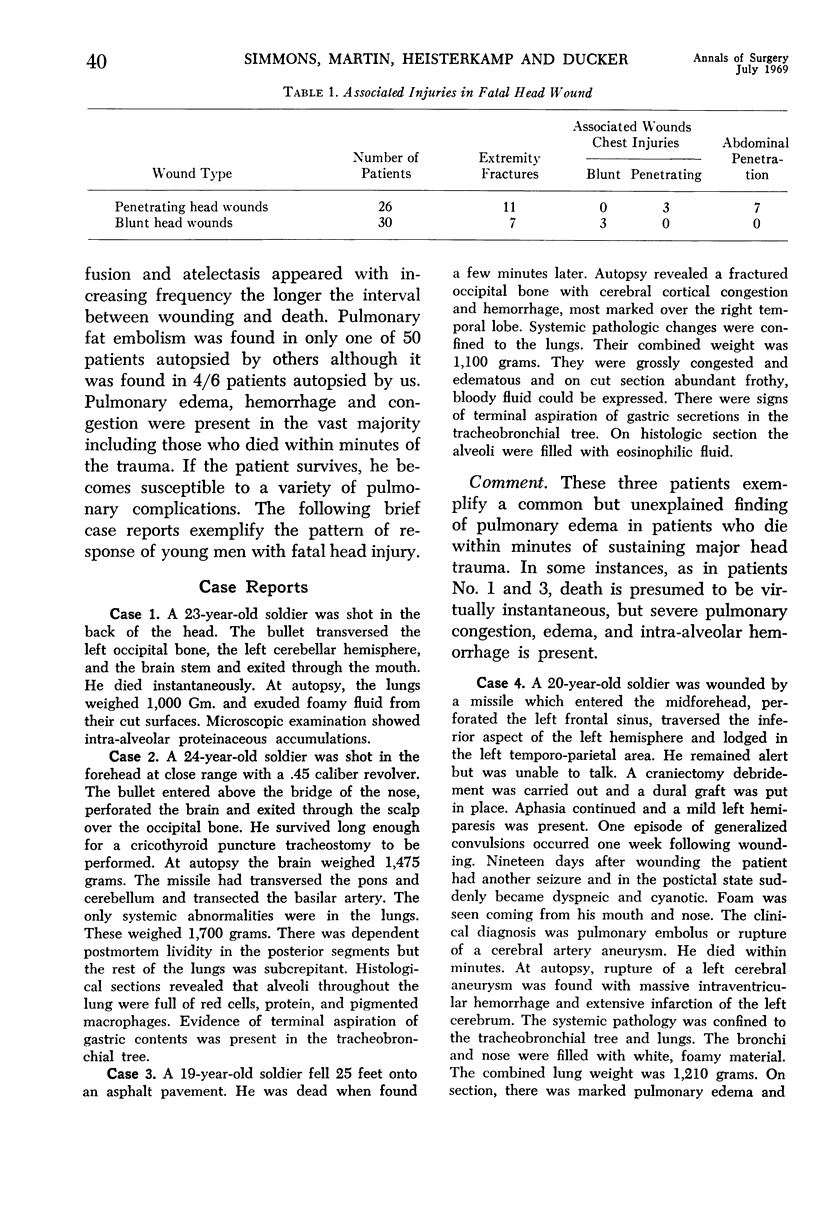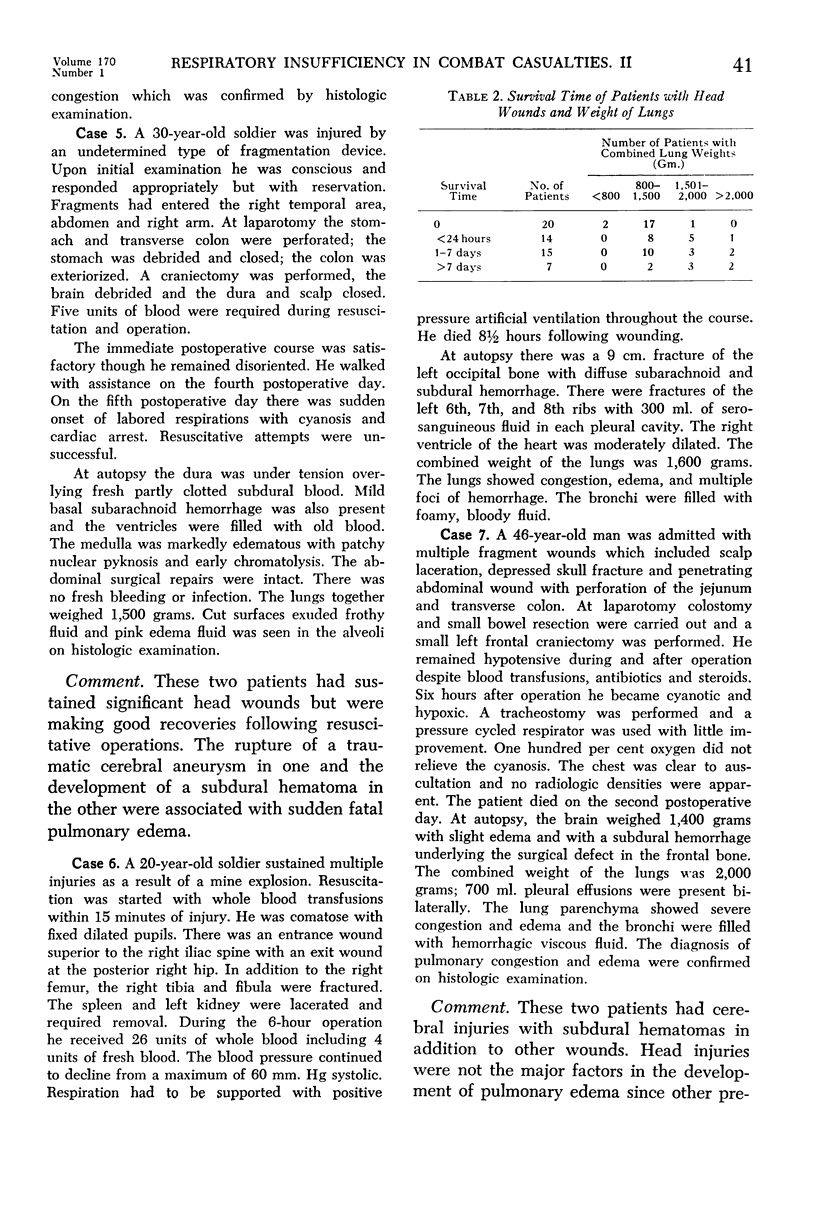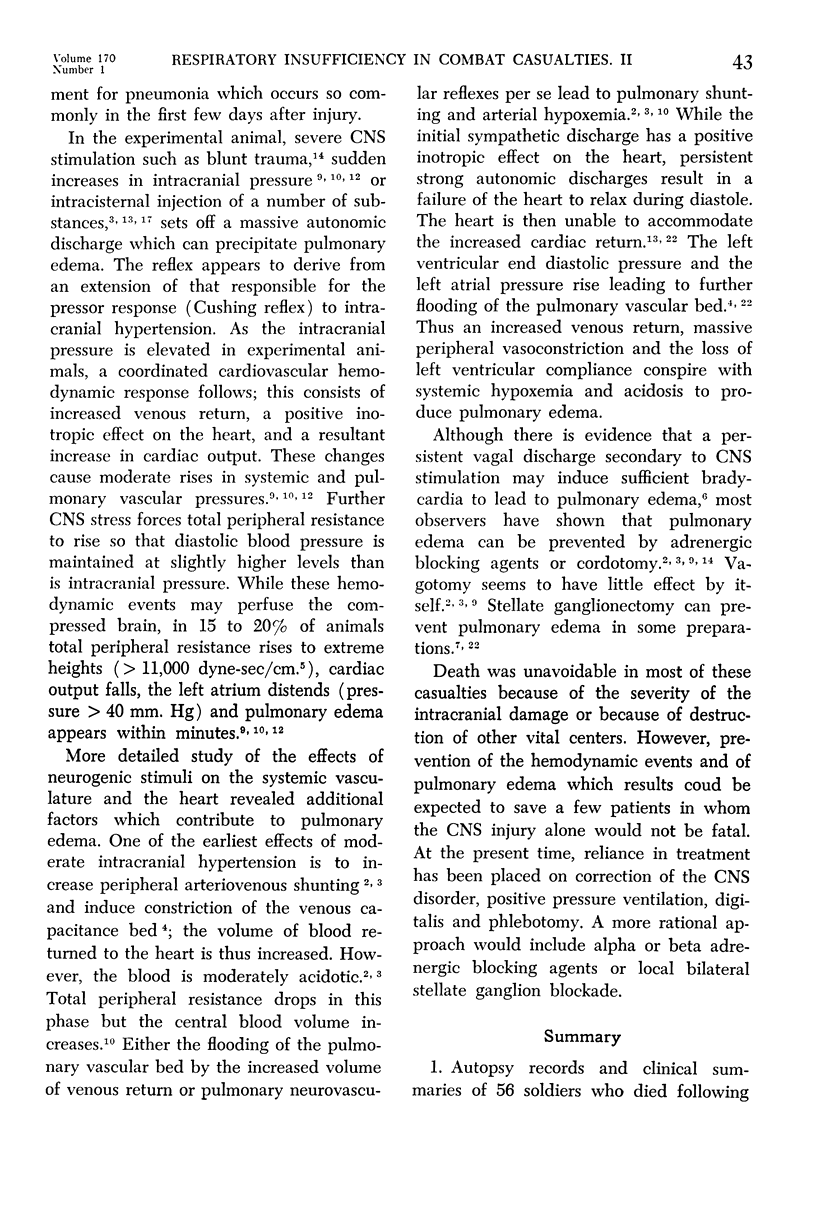Full text
PDF





Selected References
These references are in PubMed. This may not be the complete list of references from this article.
- Agar J. M. Head injury in the adolescent: medical complications in the early management. Med J Aust. 1966 Dec 17;2(25):1182–1183. doi: 10.5694/j.1326-5377.1966.tb91922.x. [DOI] [PubMed] [Google Scholar]
- BROWN F. K. Cardiovascular effects of acutely raised intracranial pressure. Am J Physiol. 1956 Jun;185(3):510–514. doi: 10.1152/ajplegacy.1956.185.3.510. [DOI] [PubMed] [Google Scholar]
- Berman I. R., Ducker T. B. Changes in pulmonary, somatic, and splanchnic perfusion with increased intracranial pressure. Surg Gynecol Obstet. 1969 Jan;128(1):8–14. [PubMed] [Google Scholar]
- Berman I. R., Ducker T. B. Pulmonary, somatic and splanchnic circulatory responses to increased intracranial pressure. Ann Surg. 1969 Feb;169(2):210–216. doi: 10.1097/00000658-196902000-00006. [DOI] [PMC free article] [PubMed] [Google Scholar]
- CAMERON G. R. Pulmonary oedema. Br Med J. 1948 May 22;1(4559):965–972. doi: 10.1136/bmj.1.4559.965. [DOI] [PMC free article] [PubMed] [Google Scholar]
- Ducker T. B. Increased intracranial pressure and pulmonary edema. 1. Clinical study of 11 patients. J Neurosurg. 1968 Feb;28(2):112–117. doi: 10.3171/jns.1968.28.2.0112. [DOI] [PubMed] [Google Scholar]
- Ducker T. B., Simmons R. L. Increased intracranial pressure and pulmonary edema. 2. The hemodynamic response of dogs and monkeys to increased intracranial pressure. J Neurosurg. 1968 Feb;28(2):118–123. doi: 10.3171/jns.1968.28.2.0118. [DOI] [PubMed] [Google Scholar]
- HARRISON W., LIEBOW A. A. The effects of increased intracranial pressure on the pulmonary circulation in relation to pulmonary edema. Circulation. 1952 Jun;5(6):824–832. doi: 10.1161/01.cir.5.6.824. [DOI] [PubMed] [Google Scholar]
- MacKAY E. M. Experimental pulmonary edema. IV. Pulmonary edema accompanying trauma to the brain. Proc Soc Exp Biol Med. 1950 Aug;74(4):695–697. doi: 10.3181/00379727-74-18018. [DOI] [PubMed] [Google Scholar]
- Plueckhahn V. D. The significance of blood alcohol levels at autopsy. Med J Aust. 1967 Jul 15;2(3):118–124. doi: 10.5694/j.1326-5377.1967.tb73918.x. [DOI] [PubMed] [Google Scholar]
- SOVA J., JIRASEK V. MECHANISM OF PULMONARY EDEMA. Biochem Clin. 1964;4:263–271. [PubMed] [Google Scholar]
- URABE M., SEGAWA Y., TSUBOKAWA T., YAMAMOTO K., ARAKI K., IZUMI K. Pathogenesis of the acute pulmonary edema occurring after brain operation and brain trauma. Jpn Heart J. 1961 Apr;2:147–169. doi: 10.1536/ihj.2.147. [DOI] [PubMed] [Google Scholar]
- VALENCIA DAVILA H., RODRIGUEZ GONZALEZ R., SCHULZ CONTRERAS M. [Experimental neurogenic pneumopathy. II. Block with novocaine of the stellate ganglion]. Neumol Cir Torax. 1962 Mar-Apr;23:97–103. [PubMed] [Google Scholar]
- WAKIZAKA J., TAKAGI S. [PULMONARY EDEMA AND THE CENTRAL NERVOUS SYSTEM]. No To Shinkei. 1965 Feb;17:127–133. [PubMed] [Google Scholar]


